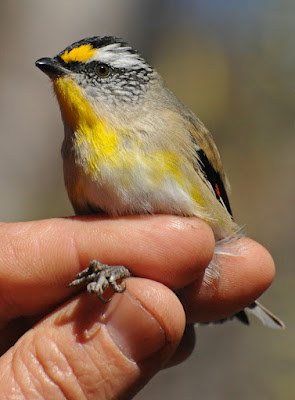The female frogmouth comes in to the nest
To see more, click on the link to a YouTube video below, it is 3m 20sec long and 7Mb.
The video opens with the male sitting on the nest, as he had done for the whole previous day. The female then comes to relieve him of his duties, but brings no food for the chicks as she would not have known there were chicks in the nest - they had hatched since her last vigil on the previous night.
The male is recognizable as the larger bird, with a broad, well striped head, bold necklace markings and stronger markings on his wing and tail feathers. She is smaller and has less markings.
He then comes in with the first food for the newly-hatched chicks. The prey they both bring in is small, linear, legless and wingless - earthworms? The chicks were fed thirteen times during the night, seven by the male and six by the female, each taking it thier turn.
The male delicately feeds the chicks with their first meal











